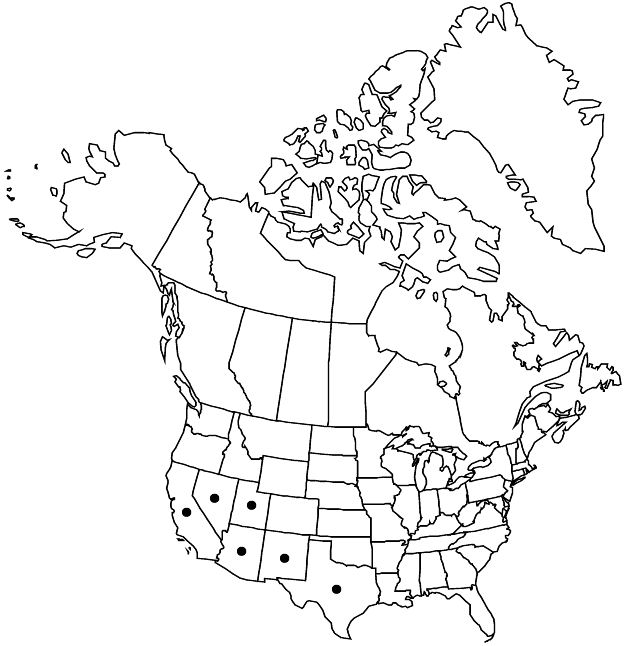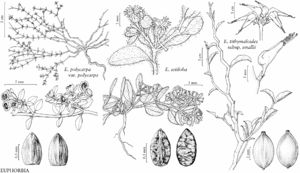Difference between revisions of "Euphorbia setiloba"
Pacif. Railr. Rep. 5(2): 364. 1857.
FNA>Volume Importer |
FNA>Volume Importer |
(No difference)
| |
Revision as of 18:19, 24 September 2019
Herbs, annual, with slender taproot. Stems prostrate, mat-forming, 5–50 cm, villous with glistening glandular hairs. Leaves opposite; stipules distinct, filiform, rudimentary to 0.2 mm, glabrous or sparsely villous with glistening glandular hairs; petiole 0.5–1.5 mm, villous; blade oblong, ovate, or elliptic, 3–7 × 2–4 mm, base asymmetric, rounded, margins entire, apex obtuse, surfaces villous; weakly 3-veined from base, commonly only midvein conspicuous. Cyathia solitary at distal nodes, nodes often congested toward tips of branches; peduncle 0.2–1.6 mm. Involucre campanulate or urceolate, 0.7–1 × 0.5–0.8 mm, villous; glands 4, red to pink, oblong to slightly reniform, 0.1–0.2 × 0.2–0.3 mm; appendages white to pink, deeply incised into 3–6 triangular to subulate, attenuate, acute segments, 0.3–0.6 × 0.6–1 mm, segments entire. Staminate flowers 3–7. Pistillate flowers: ovary villous; styles 0.3–0.4 mm, 2-fid 1/2 length. Capsules subglobose to ovoid, 1–1.2 mm diam., villous; columella 0.9–1.1 mm. Seeds pink to light gray, narrowly ovoid, 4-angled in cross section, 0.8–1 × 0.5–0.6 mm, dimpled or with faint transverse ridges that do not pass through abaxial keel.
Phenology: Flowering nearly year-round in response to sufficient moisture.
Habitat: Desert scrub, blackbrush scrub, Joshua tree woodlands, grasslands, often in sandy areas.
Elevation: 20–1600 m.
Distribution

Ariz., Calif., Nev., N.Mex., Tex., Utah, Mexico (Baja California, Baja California Sur, Chihuahua, Durango, Sinaloa, Sonora).
Discussion
Selected References
None.
